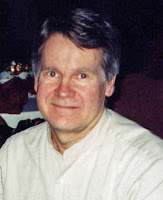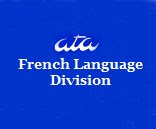Review by Alan Dages (photo below)
Dr. Aragonés began her presentation by saying that international organizations (IOs) represent a considerable share of the translation market and thus provide a steady flow of work. However, since the 1970s, their translators have had to follow manuals with rigid guidelines that cannot always be applied to the wide range of texts to be translated. At the present time, text revision is subjective in that reviewers make changes based on habit, preference and ideology. Much remains to be done to harmonize the revision function so revisers understand that their role is to control quality and provide training and not to call the translator’s ability into question. Greater tolerance is needed.
Dr. Aragonés began her presentation by saying that international organizations (IOs) represent a considerable share of the translation market and thus provide a steady flow of work. However, since the 1970s, their translators have had to follow manuals with rigid guidelines that cannot always be applied to the wide range of texts to be translated. At the present time, text revision is subjective in that reviewers make changes based on habit, preference and ideology. Much remains to be done to harmonize the revision function so revisers understand that their role is to control quality and provide training and not to call the translator’s ability into question. Greater tolerance is needed.
- Need : besoin, nécessité OMPI 08; exigence, impératif; s’impose ONU 88
- compelling need à Il est absolument nécessaire
- In need of à ayant besoin de, nécessitant (see “patient”)
- patient/subject in need thereof à patient/sujet ayant besoin (d’un tel traitement), patient dont l’état nécessite (un tel traitement).
This proposal is in fact a translation that does not respect the conventions of patents written in French where the preferred use is “patients” or “malades” alone. Indeed, little is left to chance using this approach, but does it yield better translations?
GPS ”. Aristotle was the first to study and write about text genre, but the notion took hold in literature and, much later, in cinematography. During the 1980s it turned up in sociolinguistics and rhetorics, particularly for teaching foreign languages to experts (Language for Specific Purposes, or LSP). Text genre originates from recurring situations and can be identified by the members of discursive communities who use it as a communications platform. The translator, as an outsider, can use text genre to glean missing contextual information, given she knows neither the issues and conventions nor even the intentions and objectives of the authors and readers. Far from being just a formal prototype, text genre socializes the members of a community, serving as a constantly changing model for negotiation among parties. Hence, it also socializes translators through the use of a corpus of texts, which becomes their documentation tools. This familiarizes them with IO conventions, thereby making it easier to produce a readable translation that meets the user’s expectations while keeping faithful to the author’s intentions.
0
0






No comments:
Post a Comment